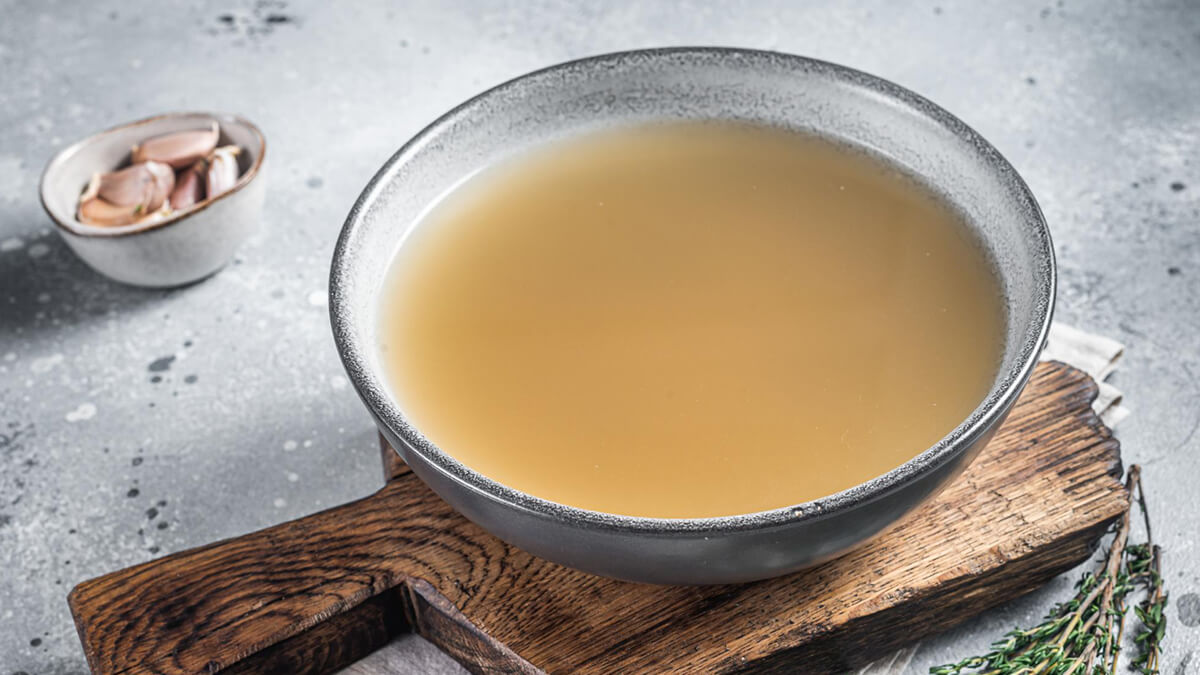8 Superfoods for Stronger, Healthier Joints (Part 13 of my Superfoods series)
Nutrition

If you’ve noticed that your joints feel more painful as you’ve gotten older, you’re not alone. Seven out of ten older adults say they experience pain in one or more joints. While less common, joint problems can affect younger adults, too.
Joint conditions, also known as arthritis, can get in the way of living the life you’d like to lead. About half of those with joint pain or stiffness say they can’t always participate in their usual activities because their symptoms get in the way. You may struggle to get out of bed in the morning or be kept awake by joint pain at night. During the day, you may find it difficult to participate in activities that require a lot of walking or do everyday tasks like cooking, cleaning, or gardening. If joint pain becomes severe, you may find yourself struggling to work, drive, or leave the house.
Whether you’re trying to improve current joint conditions or protect against future problems, following a healthy diet can keep you on track. Experts have found that certain nutrient-rich superfoods may help relieve or prevent joint symptoms.
Your Joints: An Overview
Joints are made up of many tissues. They are places where bones, muscles, and ligaments come together and allow you to move. Within your joints, fluid and a tissue called cartilage act as a buffer that prevents your bones from rubbing against each other. When you experience problems with any of these tissues, your joints may swell or fail to move as smoothly as they should.
What Causes Joint Issues?
The most common type of arthritis is osteoarthritis, a condition that affects your cartilage. Osteoarthritis occurs when cartilage wears down and disappears, leading to joint stiffness, swelling, and pain.
Other causes of joint symptoms include:
- Injuries, including bone breaks or muscle strains or sprains
- Too much physical activity or overusing a particular joint
- Tendinitis (swelling of the tendons — fibers that connect your muscles to your bones)
- Viral infections
- Osteomyelitis (a bone infection)
- Septic arthritis (an injection in your joint tissue)
- Rheumatoid arthritis or lupus (conditions that occur when your immune system mistakenly attacks your joints)
- Gout (a disorder in which a substance called uric acid builds up in your big toe or other joints)
- Juvenile arthritis (a condition in which joint symptoms develop in children)
If you have one of these conditions, you may experience symptoms like joint pain, swelling, redness, or warmth. Talk to your doctor if you think you might have a problem in one or more of your joints.
Superfoods for Joint Health: 8 Foods To Try
Do your joints sometimes give you pain? Do you have family members with joint problems and find yourself worrying that you’ll have the same issues someday? Changing up your diet with certain bone-boosting and muscle-boosting foods may be a good idea.
These superfoods won’t cure your arthritis or prevent all joint conditions, but they may improve the health and strength of your joints.

1. Bone Broth
Bone broth, made by stewing animal bones over a long time period, is a great source of collagen. Collagen is a protein that provides structure to your bones, muscles, cartilage, skin, and connective tissues.
When the collagen from animal bones is extracted and consumed, it can be absorbed by your joints. Multiple studies have reported that consuming calcium can help relieve symptoms of osteoarthritis in the hand, knee, or hip.
You can drink bone broth on its own or use it to make a soup by adding vegetables, herbs, and spices of your choice. You may also want to try using bone broth as a base in your favorite sauce, marinade, gravy, or casserole recipes. Alternatively, add a splash of this ingredient when making mashed potatoes or sautéing vegetables.
2. Red and Green Bell Peppers
You don’t always have to get collagen from your diet — your body can also make it. To boost the amount of collagen your body produces, try getting more vitamin C. This important vitamin can be found at high levels in bell peppers as well as in citrus fruits, broccoli, and strawberries.
Vitamin C can help your bones heal more quickly after an injury, which may help prevent long-term bone or joint damage. This nutrient may also be able to trigger the growth of cells called osteoblasts and osteoclasts, which break down old bone and form new bone. When you don’t get enough vitamin C, you may have weakened bones that could affect your joints, so it’s good to make sure you’re eating foods that contain this nutrient.
3. Tofu
Foods made from soy, including tofu, edamame, and soy milk, may be good for your joints. In one older study, people with osteoarthritis had improved symptoms — such as reduced pain and a greater ability to move their joints — when they ate soy protein each day. These effects were greatest in men who ate soy.
Tofu and other soy products may boost joint health by encouraging the body to make more cartilage and reduce inflammation and swelling.
4. Yogurt
Yogurt is a fantastic source of calcium, one of the most important resources for strengthening your bones. In fact, just one eight-ounce serving of plain yogurt has about one-third of the calcium you need each day, based on expert recommendations.
In addition to keeping your bones strong, calcium also supports muscle health. When you don’t get enough calcium, weakened bones or cramping muscles may lead to joint pain.
You can also take supplements to increase your calcium levels, although experts generally say that it’s better to eat calcium-containing foods like yogurt rather than rely on supplements.
Crystallized clumps of calcium are sometimes a source of joint pain. However, this doesn’t mean you should skimp on your calcium intake — calcium-related bone disease is not linked to eating too much calcium. Instead, it’s caused by joint damage or other medical conditions.
5. Trout or Salmon (Fatty Fish)
Eating fatty fish like trout, salmon, tuna, sardines, black cod, and anchovies can also boost the health of your joint tissues in a few different ways.
Fatty fish contain a lot of vitamin D. While your body can make vitamin D from sunlight, making sure to also get vitamin D from your foods is a good strategy if you don’t get outside a lot or if you make an effort to protect your skin from sun damage. Your body can’t absorb enough calcium if you don’t have vitamin D, meaning that this nutrient is important for strong bones and muscles.
Omega-3 fatty acids, another component of fatty fish, may also help by reducing inflammation, a common cause of joint pain and swelling. Some studies have found that when people increase their levels of omega-3 fatty acids, they have fewer symptoms of rheumatoid arthritis, including fewer tender joints. This nutrient may also help prevent arthritis from developing in the first place.
6. Leafy Green Vegetables
Spinach, collard greens, turnip greens, kale — these superfoods are great for your health in a number of ways. When it comes to your joints, leafy green vegetables can help by providing a large dose of vitamin K. Some types of greens provide even more than your daily recommended value of this vitamin!
Vitamin K helps control the biological cycle through which your body breaks down and creates new bone tissue. If you don’t get enough vitamin K in your diet, your bones are likely to be weaker. Eating leafy green vegetables at least once every couple of days can help ensure strong bones and joints.
7. Pumpkin Seeds
Try pumpkin seeds as an afternoon snack for an added boost of magnesium. One ounce of pumpkin seeds contains more than one-third of the magnesium you need each day! Many people, especially women who have gone through menopause, don’t get enough of this important mineral.
Most of your body’s magnesium is stored in your bones. When you don’t eat enough magnesium-containing foods, your bones may become weak, increasing your risk of bone fractures and osteoporosis (a condition in which your bones become too thin). These issues may, in turn, affect the joints. Researchers have found that those who eat the highest amounts of magnesium have more muscle and stronger bones.
You can also get this mineral from other sources, such as chia seeds, cashews, almonds, and spinach.
8. Prunes
Some research has found that prunes (dried plums) can influence bone health. While your bone density and strength typically decrease as you get older, one study found that older women who regularly ate prunes didn’t lose bone at the same rate. In other words, their bones stayed strong while their peers’ bones aged more. This may be because prunes contain helpful nutrients like vitamin K.
Cutting Out Foods That Are Bad for Your Joints
In addition to adding superfoods to your diet, you can also cut out unhealthy foods. For better joint health, limit the number of foods you consume that contain saturated fat, trans fat, cholesterol, added sugar, and salt.
Maintaining a healthy weight can also help your joints by putting less pressure on them. When you cut out things like excess fats and sugars, you may have an easier time reaching and maintaining a weight that is better for your joints.

Physical Activity for Better Joints
While switching up your diet can help keep your joints working well as you get older, there are also other strategies you can use to improve your joint health.
Getting more physical activity can do wonders for your joints — it can help prevent future joint issues and help relieve joint pain and stiffness for those who already have joint conditions like arthritis. When the muscles around your joints are stronger, they can keep your joints moving properly.
To keep your joints safe and healthy while exercising, try the following tips:
- Wear properly fitting shoes
- Use any necessary protective gear or padding while playing sports
- Warm up your muscles and joints before you do any strenuous activity
- Do regular stretching exercises to keep your joints flexible
- Try exercises that have a lower impact on your joints, such as swimming or biking rather than running
- Treat any injuries promptly, including by resting and avoiding further physical activity until you start to feel better
Getting more physical activity isn’t just about going to the gym or starting an exercise program — it’s also about moving more throughout the day. If you stay in one position for a long time, your joints can stiffen, especially if you have arthritis. Therefore, it’s good to regularly get up, stretch, or simply change positions if you’re going to be sitting for a while. For example, try setting a timer to remind yourself to move every 15 minutes while working at a desk or watching television.
Being more active in addition to eating more superfoods may help give you the best results.
Treating Joint Conditions
At home, you may be able to relieve joint pain through over-the-counter medications like ibuprofen or acetaminophen. Putting a hot water bottle on a painful joint, taking a warm bath, and massaging the affected area may also help.
More severe joint issues may require more aggressive treatments such as corticosteroid injections, physical therapy, or stronger pain relievers. If your joint symptoms were caused by an infection, you may need to take antibiotics.
You can also try lifestyle strategies to help avoid pain and limit joint strain while living with arthritis. For example, if you need to use an item regularly, store it in an easy-to-reach place or place duplicates in multiple rooms in your house. Use automatic tools such as electric can openers for everyday tasks, and use grabber tools so that you can avoid having to stretch or bend over. Ask for help from loved ones when it comes to household tasks that are too taxing on your joints.
Conclusion
Talk to your healthcare provider if you’re worried about your joint health. Your doctor can help you understand whether you have any current joint conditions and recommend treatment options that can improve joint strength and reduce joint pain and swelling. Additionally, your doctor can analyze whether your diet is meeting your nutritional needs and helping you be the healthiest you can be.